Blackened, totemic, slightly terrifying: all of these words come easily to mind looking at All Fall Down, a new exhibition from acclaimed local artist Martha Sturdy at the West Vancouver Art Museum.
Sturdy has long been known for her jewelry and furniture designs in Vancouver. But her new work is something of a departure from the brightly coloured resin and ribbony metal that cemented her acclaim as a designer.
All Fall Down, a series of large-scale sculptures made of salvaged wood, is dark. Midnight black and blue, pierced by the occasional bolt of red rusted metal and mellowed bronze. The dominant colour, or lack thereof, is a soul-deep hue that resounds like someone hitting a gong.
Separating artists from their art can be a tricky business. After all, they created it, summoned it forth from the ichor of creativity that rucks and roils just below the surface, and fashioned it into a collection of objects. Sometimes not even artists themselves seem exactly sure where a particular idea came from and what it means.
This isn’t the case with Sturdy. The woman is extremely clear about the origins of her work and what she wants it to do.
A straight shooter, she makes for an interesting presence, so much so that you almost want to be left alone, without her there, to listen to the art itself speak. The work in All Fall Down is saying a lot of different things. Some pieces whisper and others are a bit louder.
The large-scale installation situated outside on a corner of the gallery’s lawn is the first time a public artwork has taken pride of place at the West Vancouver Art Museum. As Sturdy explains, she sourced the wood for her exhibition from her property in Pemberton, some of which served a previous function as old horse jumps. She stained them a coal-coloured tarry hue and organized their exact placement. The cross-hatched pile gives off a variety of different references, none more resonant than the ongoing state of calamity that has gripped large sections of the province every summer as fire eats the forests alive.
It is easy to look at the blackened timbre and see a wail of embodied despair, but Sturdy’s message is more multi-dimensional than that. Look closer and in the crook of darkness is the fluorescent green of new growth. A small cedar seedling pokes out, its lacey little fronds filled with hope and the perkiness of youth. An important message from Sturdy’s exhibition is that as long as the world has been around, people have been predicting its imminent end. So far, the planet keeps on spinning. For now, anyway.
Born in 1942, Sturdy has lived through various ecological disasters. She recounts the Great Smog of London, a fatal event in December 1952 when a combination of low temperatures, a windless day and thick air pollution from coal caused more than 4,000 deaths. Recent estimates have set the number of fatalities at a much higher figure, as many as 12,000, due to the severity of the airborne pollution.
It’s a timely reminder that breathing is a significant part of life — Vancouver’s own atmosphere has been rank and heavy with smoke. And catastrophic environmental events have long been a part of human history, whether it’s acid rain, holes in the ozone layer or the threat of nuclear winter. It’s a philosophy summed up by Sturdy as “This too shall pass” and “shit happens.”
In the meantime, just keep working.
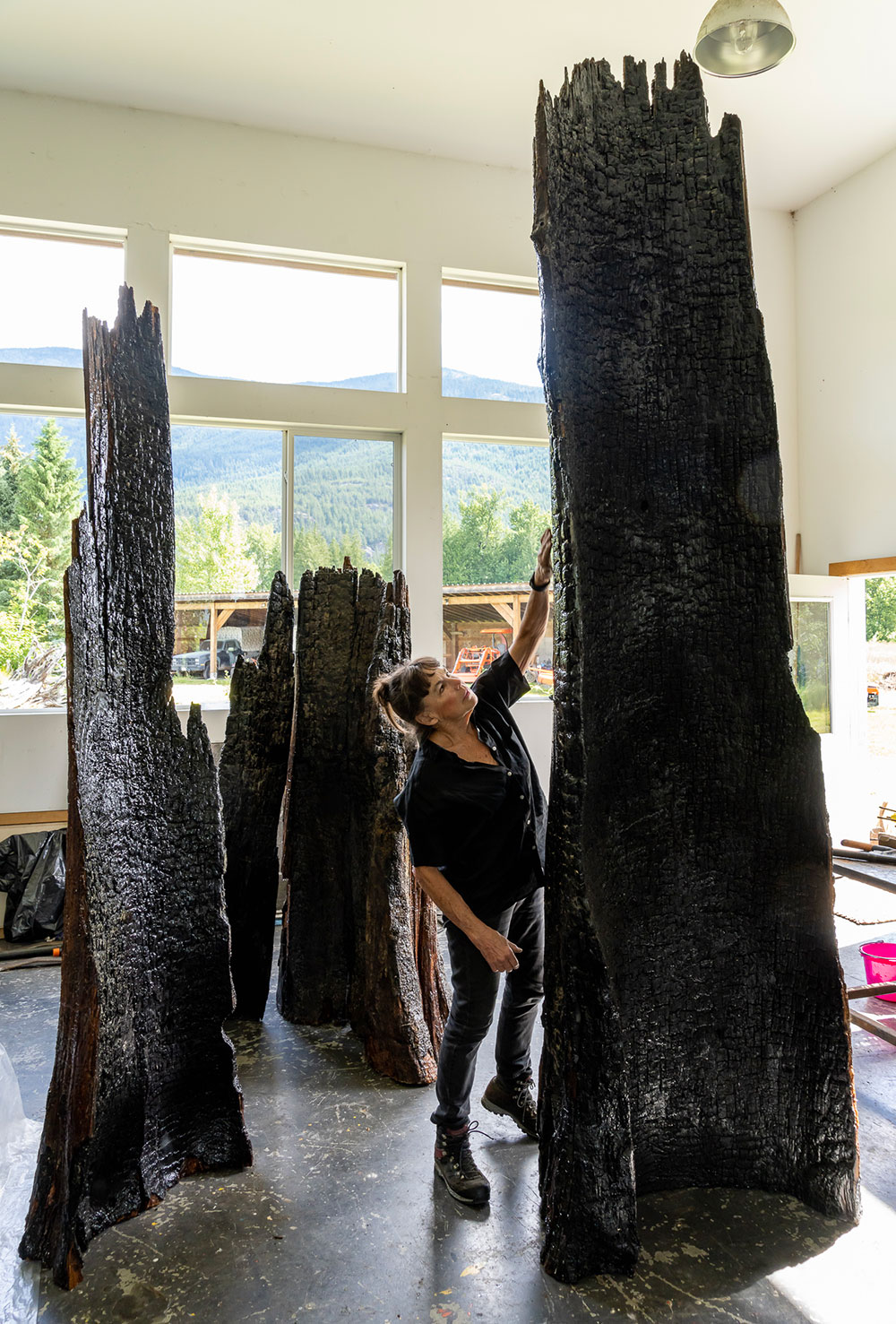
Sturdy’s work and life are in inextricably combined. After two stints at art school, her studies separated by marriage and kids, she graduated in 1978 from what was then the Vancouver School of Art (now Emily Carr University of Art + Design) and went on to forge a career in design. She was awarded the Golden Jubilee award by the Governor General in 2002 and inducted into the Royal Canadian Academy of Arts in 2005. Her line of sculptural jewelry that vaulted her into the world of haute couture soon expanded into other functional design creations like furniture and home decor. But at heart, Sturdy remained a sculptor.
At age 80, Sturdy is still actively searching out new ideas, new idioms and new ways of working. She talks quickly, moving between the events of her life and the materiality of resin, wood and blue steel, backwards and forwards in time. She covers tremendous ground, from the relationships between the natural world and humans, to her own daily routines, which involve feeding horses, dogs and her husband, in that order.
All Fall Down arose in part from her experience living in the Pemberton Valley, an area rich with trees, animals and the raw stuff of the living world. It was a grove of cedars on Sturdy’s property that provided particular inspiration. The trees, some more than 300 years of age, make up a community. In our conversation, the role of mother trees and nurse logs comes up. It is resonant for Sturdy in a number of ways. The fallen trunks of gargantuan cedars give their nutrients to the next generation, a maternal level of sacrifice that allows for the growth of the forest as a whole. This form of continuity means that nothing is truly lost: it is simply recirculated. It’s an idea that pertains equally to the creative act.
Part of the inspiration for All Fall Down came from an experience Sturdy had at age 10. While travelling through B.C.’s Interior, she witnessed an entire mountainside burned into a desolate moonscape. It’s an indicator that creative seeds, even those long-buried, will eventually surface.
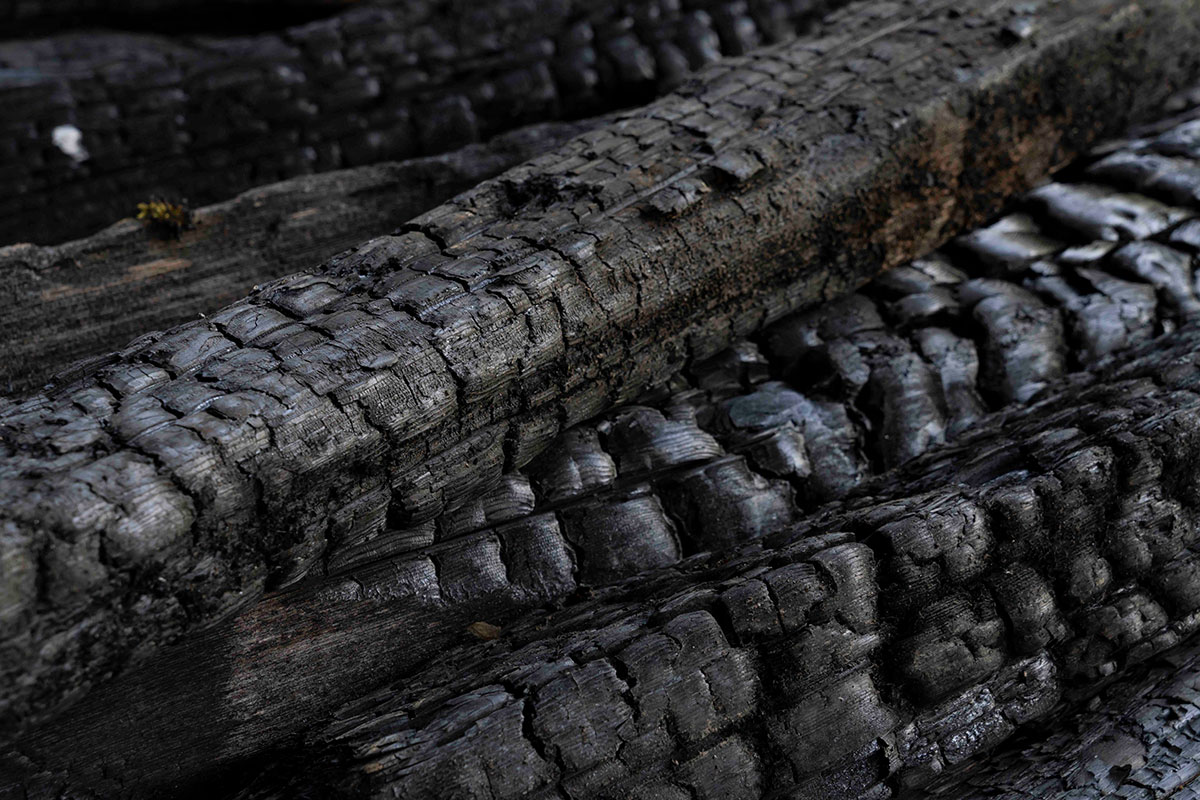
The current exhibition includes four separate works. Of these, the third was made more than a decade earlier. It’s an indication that these ideas have been living in the artist’s mind for a while.
All Fall Down 3 is a sleeker creature than the rest of its brethren. It’s smooth and satiny, ribboned with a warm strip of dark bronze in the centre. There is something confectionary about it, recalling the sweet darkness of black licorice and caramel.
In the main room of the gallery, a more profoundly dystopian quality is evident. The atmosphere speaks of a scorched and barren landscape attended only by a howling wind. This recent work is stark, recalling totemic figures like burnt offerings. There are puddles of melted metal at their feet, like it has dripped and pooled from the sheer blast furnace of heat. There is something strangely human about these figurations. Maybe its’s the scale or the twisted undulations that recall modern choreography, à la Pina Bausch. The ebony surfaces are erupted by bumps where branches once lifted to the sky. Now they’re just nubs, eaten away by fire, mute and truncated, but still possessing an odd kind of beauty.
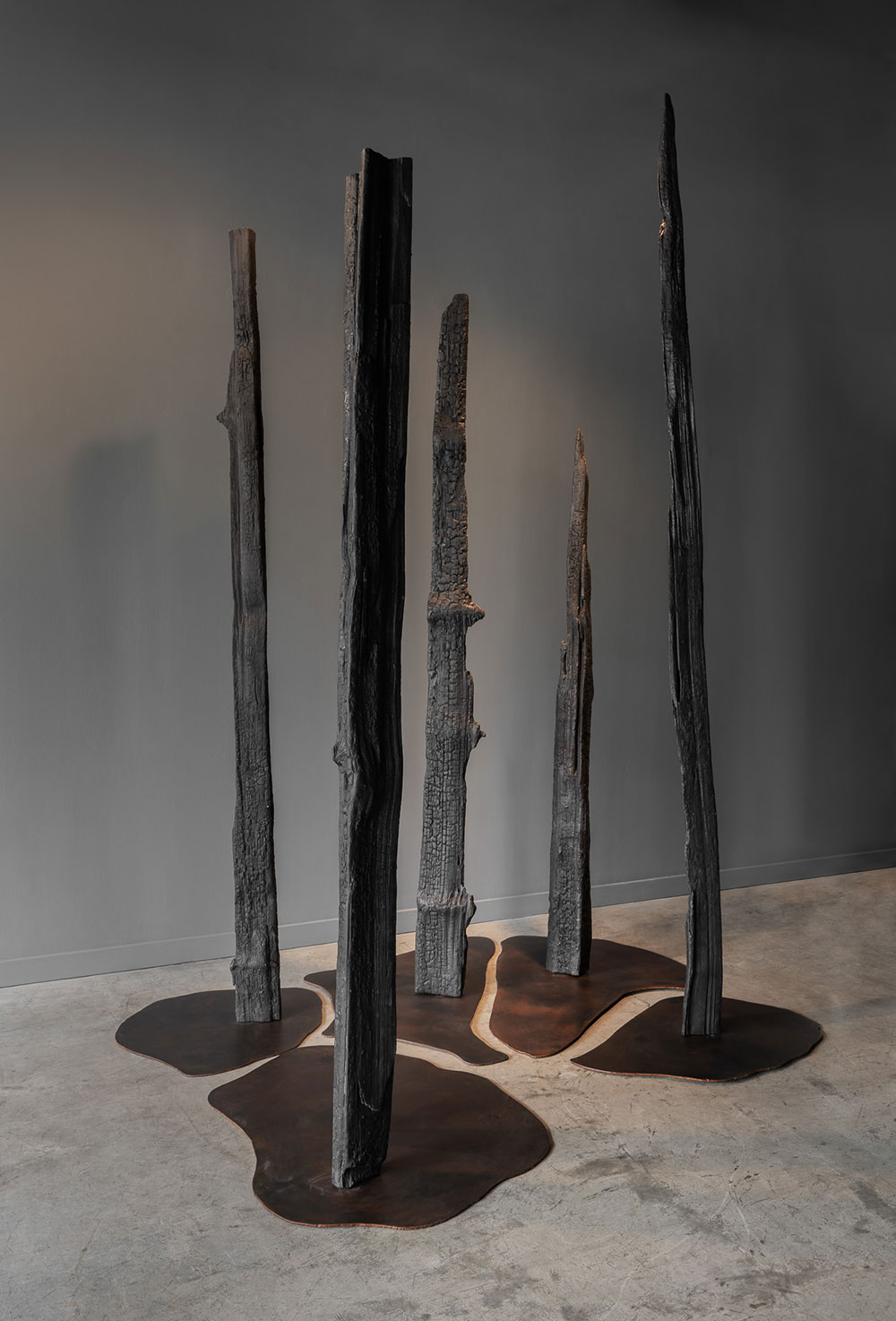
Sturdy’s attraction to the fleshy materiality of salvaged cedar was part of the decision to work with wood. Cedar splits along lines that recall the human body. But there were a number of practical considerations. As she explains, the thin coating of resin that covers the exterior of the work was not just an aesthetic choice, but also a practical one. Without this kind of sealant on the charcoal surfaces, the gallery would have been covered in soot in short order. This resin adds shine and depth to colours inside, so that turquoise blue and other unlikely colours wind their way out of the darkness.
All Fall Down 2 affixed to the gallery wall is an outsized bundle of timbre, encircled by a length of rusty chain. It reminded me of an enormous dark bouquet, like something Godzilla might gift to his girlfriend. Less fantastically, though, it speaks to B.C.’s history with extractive industries like logging, mining and the heavy dirty work that transformed entire sections of the province’s forests into denuded scarred landscapes.
Sturdy insists that the work isn’t intended to be negative. Just the opposite. Underneath the charcoaled exteriors, some greener bit of hope lurks, a secret bit of life simply waiting for its time. Although the more positive, hopeful aspects might be harder to see, that’s the important part, looking past the darkness into the light just beyond.
‘Martha Sturdy: All Fall Down’ is on exhibition at the West Vancouver Art Museum until Dec. 17. ![]()
Read more: Art, Environment


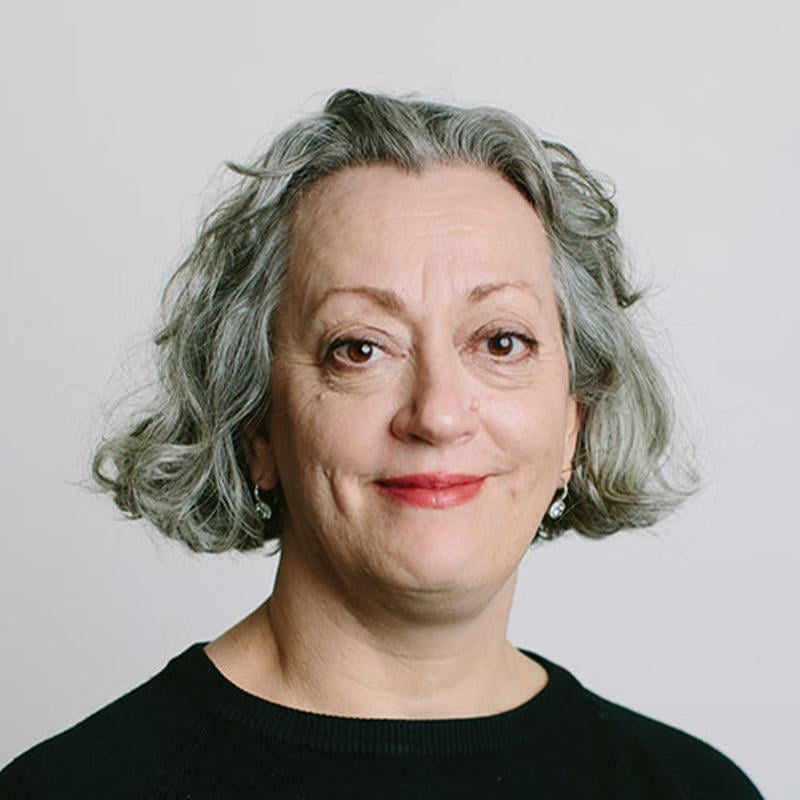
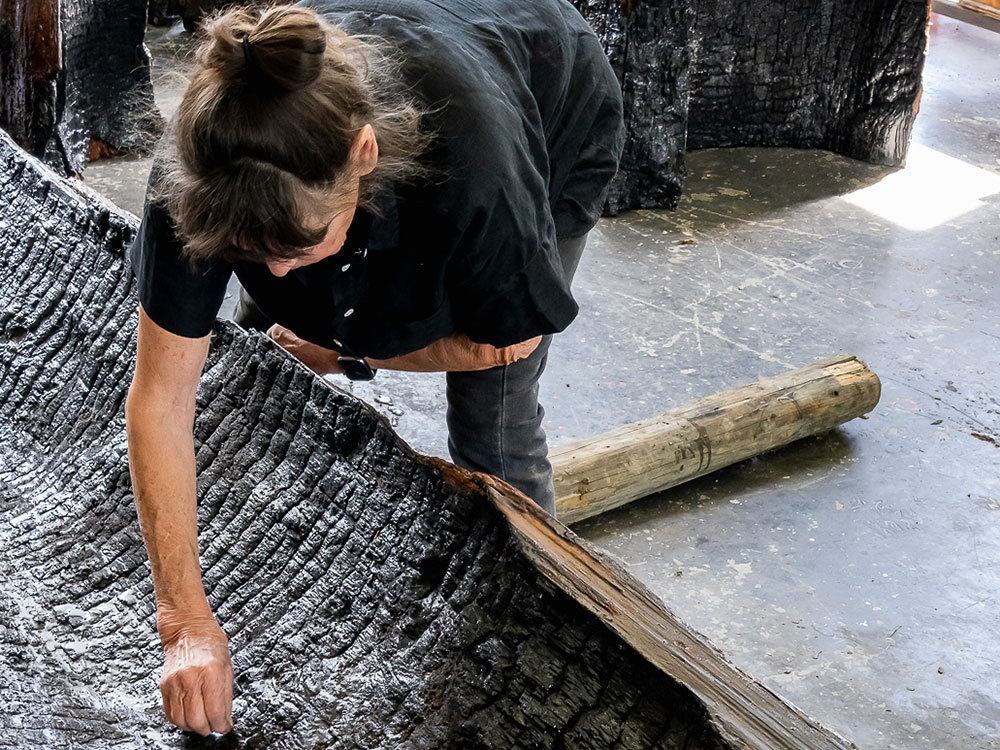












Tyee Commenting Guidelines
Comments that violate guidelines risk being deleted, and violations may result in a temporary or permanent user ban. Maintain the spirit of good conversation to stay in the discussion.
*Please note The Tyee is not a forum for spreading misinformation about COVID-19, denying its existence or minimizing its risk to public health.
Do:
Do not: